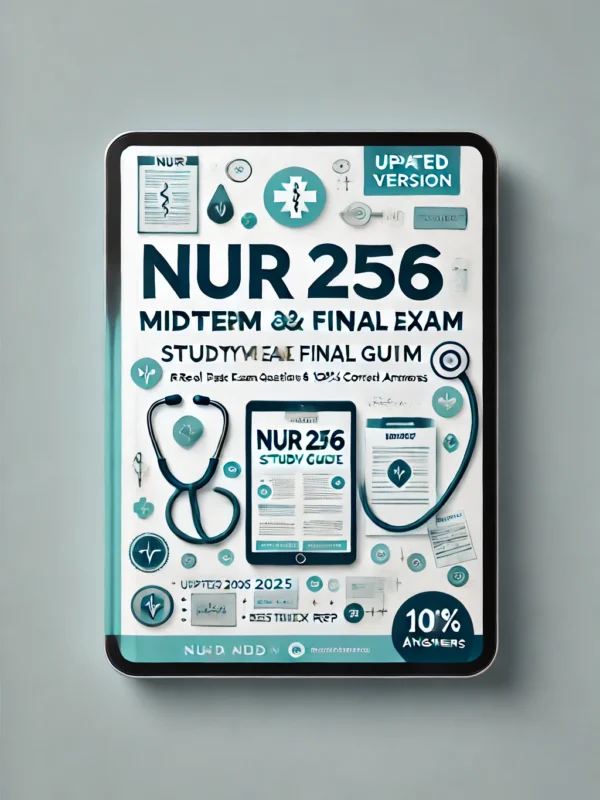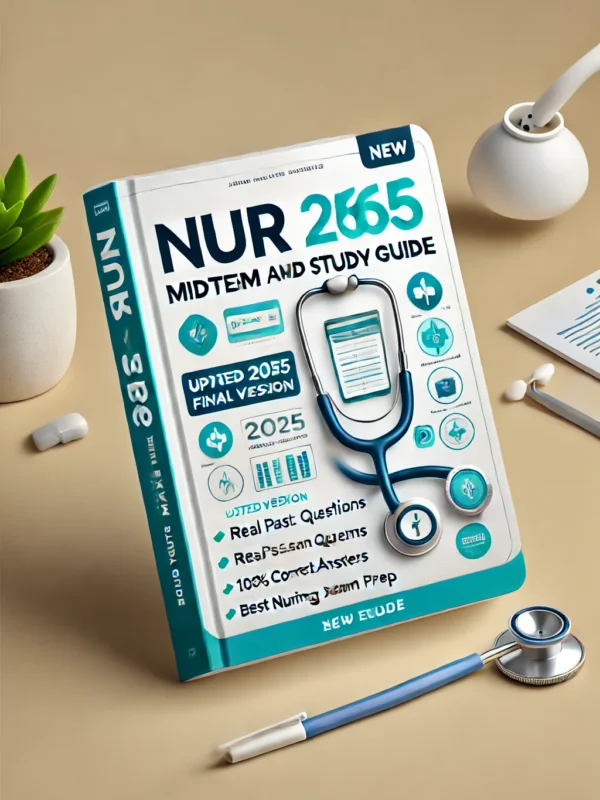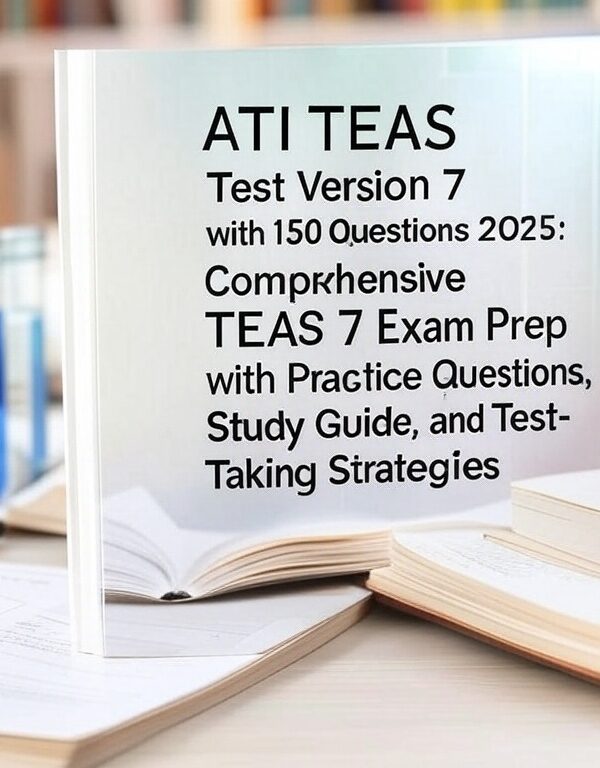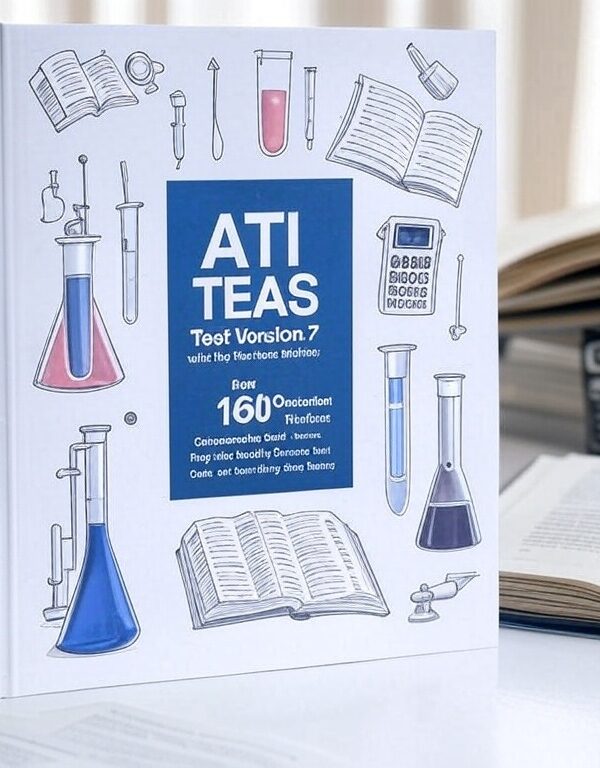Conquer the Science section of the ATI TEAS Exam 2025 with this ultimate study guide, expertly tailored for aspiring nursing and allied health students. This comprehensive resource focuses on the critical science domains tested in the TEAS, including anatomy and physiology, biology, chemistry, and scientific reasoning. It features a robust collection of practice questions designed to mirror the exam’s format, each accompanied by detailed answers and in-depth explanations to solidify understanding and enhance problem-solving skills. Aligned with the 2025 ATI TEAS content outline, the guide incorporates the latest evidence-based standards and offers proven test-taking strategies to optimize performance, manage time effectively, and approach complex questions with confidence. Ideal for students aiming to excel in the science section and secure admission to competitive healthcare programs, this study guide is an indispensable tool for achieving top scores and academic success.
Preview
1. Which of the following statements is/are true regarding cells and tissues?
A. Cells and tissues carry out all chemical activities needed to sustain life
B. Cells are the building blocks of all living things
C. Tissues are groups of cells that are similar in structure and function
D. All the above are true
✅ Correct Answer: D. All the above are true
Rationale: Cells are the basic unit of life, and tissues consist of similar cells that
perform a shared function. Both work together to sustain life by carrying out necessary
chemical activities.
2. Which of the following statements about saltatory conduction are true?
A. It occurs in myelinated neurons only
B. It is faster than normal nerve conduction
C. It occurs from one node of Ranvier to the next node of Ranvier
D. All the choices are correct
✅ Correct Answer: D. All the choices are correct
Rationale: Saltatory conduction occurs in myelinated neurons, where electrical
impulses jump from one node of Ranvier to another, increasing conduction speed.
3. Which of the following are major homeostatic functions of the liver?
A. Energy storage and use
B. Supporting the kidneys in waste disposal
C. Emulsifying fats in the small intestine
D. Blood clotting and maintenance of osmotic balance
E. All the choices are correct
✅ Correct Answer: E. All the choices are correct
Rationale: The liver plays a critical role in metabolism, detoxification, digestion (bile
production), blood clotting, and maintaining osmotic balance.
4. The protection of the internal environment from fluctuations in the external
environment is termed as:
A. Homeostasis
B. Excretion
C. Hemostasis
D. Osmoregulation
✅ Correct Answer: A. Homeostasis
Rationale: Homeostasis is the body’s ability to maintain a stable internal environment
despite external changes.
A. Cells and tissues carry out all chemical activities needed to sustain life
B. Cells are the building blocks of all living things
C. Tissues are groups of cells that are similar in structure and function
D. All the above are true
✅ Correct Answer: D. All the above are true
Rationale: Cells are the basic unit of life, and tissues consist of similar cells that
perform a shared function. Both work together to sustain life by carrying out necessary
chemical activities.
2. Which of the following statements about saltatory conduction are true?
A. It occurs in myelinated neurons only
B. It is faster than normal nerve conduction
C. It occurs from one node of Ranvier to the next node of Ranvier
D. All the choices are correct
✅ Correct Answer: D. All the choices are correct
Rationale: Saltatory conduction occurs in myelinated neurons, where electrical
impulses jump from one node of Ranvier to another, increasing conduction speed.
3. Which of the following are major homeostatic functions of the liver?
A. Energy storage and use
B. Supporting the kidneys in waste disposal
C. Emulsifying fats in the small intestine
D. Blood clotting and maintenance of osmotic balance
E. All the choices are correct
✅ Correct Answer: E. All the choices are correct
Rationale: The liver plays a critical role in metabolism, detoxification, digestion (bile
production), blood clotting, and maintaining osmotic balance.
4. The protection of the internal environment from fluctuations in the external
environment is termed as:
A. Homeostasis
B. Excretion
C. Hemostasis
D. Osmoregulation
✅ Correct Answer: A. Homeostasis
Rationale: Homeostasis is the body’s ability to maintain a stable internal environment
despite external changes.












Reviews
There are no reviews yet.